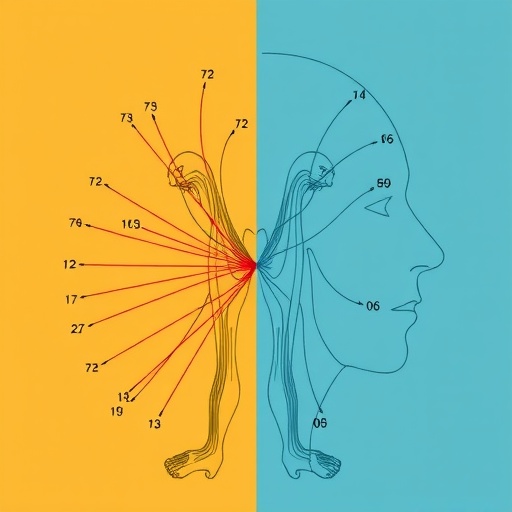PROTECT YOUR DNA WITH QUANTUM TECHNOLOGY
Orgo-Life the new way to the future Advertising by AdpathwayBreast cancer remains one of the most significant health challenges faced by women globally, affecting approximately 2.3 million women today. Among these, a notable proportion—around 25%—are diagnosed with ductal carcinoma in situ (DCIS), an early-stage breast cancer characterized by cancer cells confined to the milk ducts. While patients diagnosed with DCIS often have an optimistic prognosis, the inconsistency in outcomes is troubling. Research indicates that untreated cases of DCIS may progress to invasive cancer in 10% to 53% of patients, rendering the need for effective prognostic tools critical.
In the current landscape of breast cancer treatment, health professionals often recommend aggressive interventions such as lumpectomy or mastectomy for all diagnosed patients. Furthermore, radiation therapy and anti-hormonal therapy are frequently prescribed based on specific characteristics of the cancer, particularly the presence of hormone receptor-positive DCIS. The intention behind this universal approach is to mitigate the risk of cancer progression, though it can expose patients to unnecessary harsh treatments, which may not always be warranted.
As early detection techniques, including mammograms, become more prevalent and are recommended at younger ages, women face daunting choices regarding their treatment options. Unfortunately, patients frequently navigate these decisions without a personalized understanding of the risks associated with their particular case. Many women—who may not require aggressive treatments—are subjected to them, while others whose cancers progress might receive insufficient care.
Recent research conducted by the University of Michigan and the University of Kansas has unveiled a promising avenue for improving therapeutic decision-making in DCIS patients. This study aims to pinpoint specific biomarkers that could effectively differentiate among patients—those who would benefit from intense therapeutic measures versus those whose conditions warrant less invasive interventions. The breakthrough lies in the analysis of circulating tumor cells in patients’ blood, which could provide vital insights into the likelihood of cancer progression.
The mechanism behind this innovation involves identifying cancer cells that have detached from the primary breast tumor and entered the bloodstream. These cells, often present in minuscule quantities and typically eluding the detection capabilities of standard laboratory techniques, have the potential to generate new tumors elsewhere in the body. To facilitate the identification and analysis of these elusive cells, the research team deployed a revolutionary tool called the “labyrinth chip,” first introduced in 2017. This device employs a maze-like channel system to isolate and extract cancer cells from blood samples, allowing researchers to gather enough cells for comprehensive diagnostic testing.
During the study, researchers successfully employed the labyrinth chip to collect circulating cancer cells from the blood of 34 patients diagnosed with ductal carcinoma in situ. Following this, they meticulously analyzed the genetic profiles of the circulating cancer cells and compared them to those harvested from breast tissue biopsies taken from the same patients. Their goal was twofold: to identify active genes in the cancer cells circulating in the bloodstream and to ascertain whether these markers could correlate with disease progression.
Through this analysis, the research team was able to classify the cancer cells from tissue biopsies into four distinct subtypes, with two of these displaying significant activity in the blood samples. Notably, the genes active in these subtypes appeared to be linked to cancer progression and resistance to chemotherapy. Further examining the genetic activity revealed implications regarding how certain cancer cells could evade the immune system, enhancing their potential to cause harm once they migrate to secondary sites in the body.
The study also presented intriguing demographic insights. Six Black patients participating in the research exhibited a greater presence of cancer cells in their blood compared to their white counterparts, alongside more pronounced immune suppression. This observation resonates with broader epidemiological patterns indicating higher mortality rates from breast cancer among Black women, suggesting that environmental factors—not race—may play a significant role in these disparities. This highlights the urgent need for personalized treatment strategies that account for the unique biological and environmental contexts shaping individual patients’ health outcomes.
Future research efforts will seek to unravel the complexities of the identified cell types and biomarkers, specifically their capacity to disseminate and establish secondary tumors. This will be investigated through animal models, wherein cancer cells from participating patients are transplanted into mice to observe their behavior over time. After several months, the mice displayed an uptick in circulating cancer cells, which will be further analyzed through gene sequencing techniques. This approach will allow researchers to track disease progression more closely and, ideally, apply these insights to develop personalized treatment stratagems for human patients.
Funding for this groundbreaking study was generously provided by multiple institutions, including the University of Michigan Forbes Institute for Cancer Discovery, the Kansas University Cancer Center, the Kansas Institute for Precision Medicine, and the National Center for Advancing Translational Sciences. The team is committed to advancing the field of breast cancer treatment and prognosis, with the hope that their findings will facilitate a paradigm shift toward more personalized, effective therapeutic modalities. Not only could this enhance survival rates, but it also holds the potential to improve the quality of life for countless women navigating the complexities of breast cancer treatment.
The labyrinth chip, crucial to the study’s findings, was developed at the University of Michigan’s Lurie Nanofabrication Facility. Its capabilities extend beyond this immediate research application; it represents a new frontier in the technique of liquid biopsy, providing a less invasive option for tracking cancer progression and treatment efficacy. Moreover, the research team aims to see the clinical application of these insights through the commercial endeavors of U-M startup Bloodscan Biotech, which licensed the labyrinth chip technology.
As the quest for improved cancer diagnostics and treatments continues, this study stands as a notable beacon of hope. By integrating advanced engineering with cancer biology, researchers are paving the way for innovative strategies that could revolutionize how breast cancer is diagnosed and treated, ultimately leading to enhanced survival and a better quality of life for patients facing this challenging disease.
With the rapid progress in the medical field, it is essential for healthcare providers to adopt new research findings and integrate them into clinical practice. This will ensure that patients receive evidence-based care that is tailored to their specific needs, thereby reducing the emotional and physical toll of aggressive treatments that may not be necessary. Moving forward, the implications of this research extend well beyond breast cancer itself, as the methodologies developed could create a foundation for similar approaches in other cancers, ultimately advancing the field of oncology as a whole.
As further studies build on this knowledge and biomarker identification becomes more refined, the medical community holds great promise for reducing over-treatment and improving outcomes for breast cancer patients. The integration of these advancements in clinical settings will be vital in navigating the complexities of cancer treatment decision-making and steering patients toward more dedicated and less invasive therapeutic pathways. Ultimately, the goal remains clear: to harness these insights for a future where every breast cancer patient can make informed choices with confidence in the efficacy and appropriateness of their treatment options.
Subject of Research: Circulating tumor cells as biomarkers in breast cancer risk stratification
Article Title: Circulating Tumor Cells as Predictive Biomarkers in the Risk Stratification of DCIS: Evidence of Early Dissemination
News Publication Date: October 2023
Web References: University of Michigan
References: Science Advances, DOI: 10.1126/sciadv.adz0187
Image Credits: University of Michigan
Keywords
Breast cancer, DCIS, circulating tumor cells, cancer treatment, biomarkers, liquid biopsy, personalized medicine, genetic profiling, breast cancer disparities.
Tags: advancements in cancer cell isolation techniquesaggressive interventions for breast cancerbreast cancer treatment optionschallenges in breast cancer decision-makingductal carcinoma in situ prognosisearly detection of breast cancerhormone receptor-positive DCIS managementisolating cancer cells from bloodmammogram recommendations for womenpersonalized breast cancer treatmentprognostic tools for DCISrisks of untreated DCIS


 18 hours ago
11
18 hours ago
11





















 English (US) ·
English (US) ·  French (CA) ·
French (CA) ·